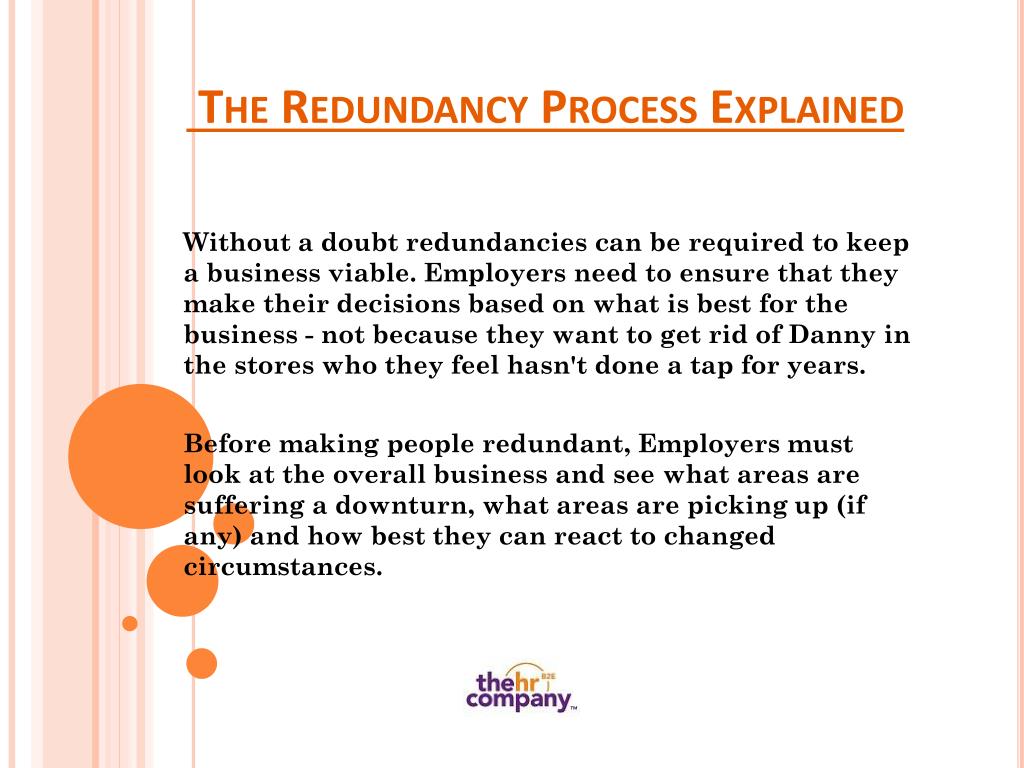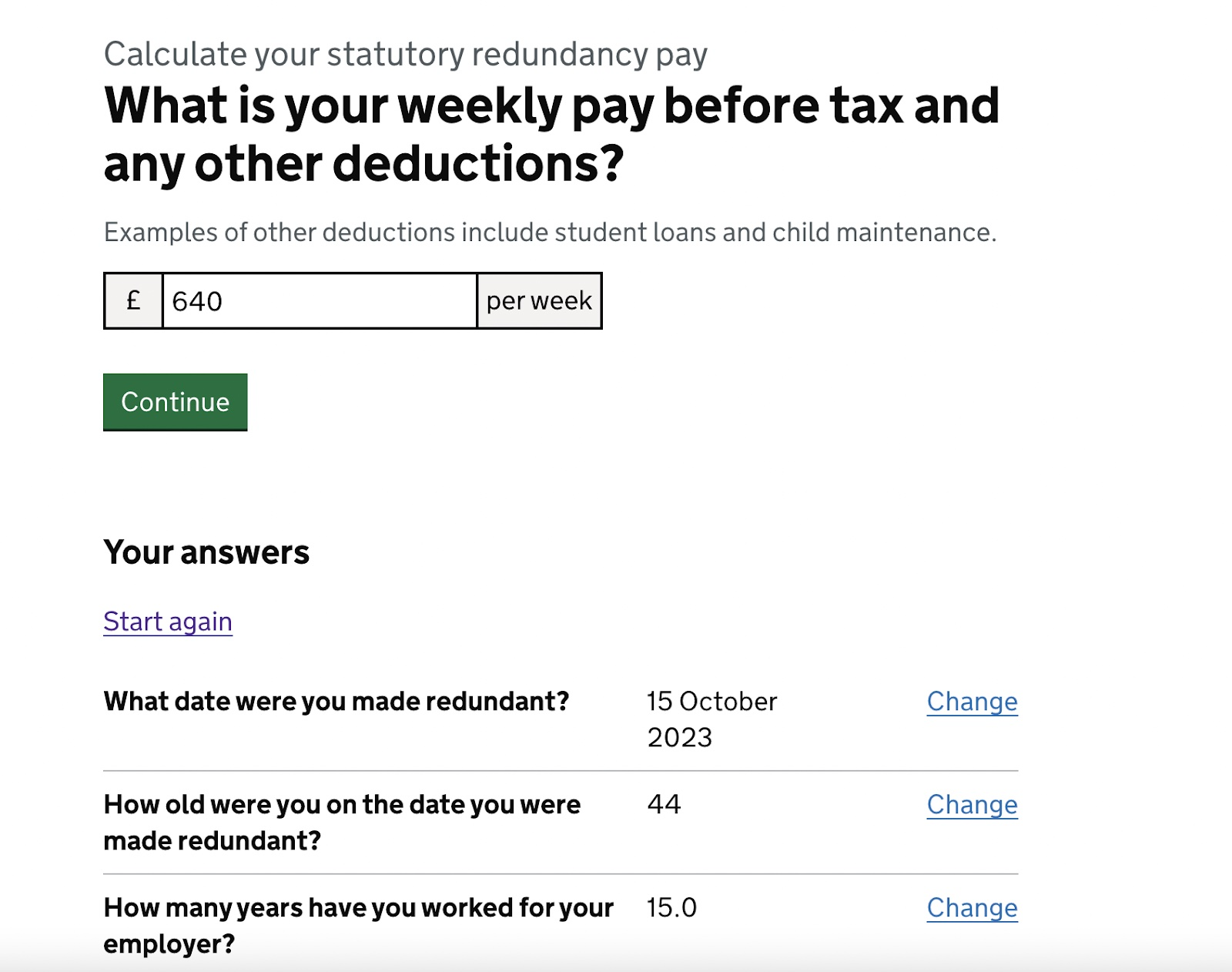Just How to Deal With Redundancy Pay If Company Goes Bust: Trick Information for UK Workers
Just How to Deal With Redundancy Pay If Company Goes Bust: Trick Information for UK Workers
Blog Article
Examining the Interaction Between Company Redundancy and Organizational Adaptability for Future Development
In the dynamic landscape of today's organization world, the intricate partnership in between firm redundancy and organizational adaptability emerges as a vital variable for sustained development and success. Companies often encounter the obstacle of striking a delicate equilibrium between preserving a level of redundancy to reduce threats and promoting versatility to react promptly to the ever-evolving market demands.
Value of Company Redundancy
Company redundancy is a critical element that boosts organizational strength and alleviates operational dangers. By integrating redundancy procedures within the business structure, business can much better hold up against unforeseen interruptions and fluctuations in the organization environment. Redundancy acts as a strategic barrier, allowing firms to adjust and respond efficiently to unforeseen challenges without compromising important operations.
One key aspect of the significance of firm redundancy is its duty in making sure connection during times of crisis. When confronted with abrupt modifications or emergencies, redundant systems, sources, or employees can action in to preserve important functions and protect against prevalent interruptions. This continuity not just safeguards the business's credibility and customer trust fund however likewise minimizes financial losses and functional downtime.

Techniques for Business Adaptability

One more critical technique is spending in innovation and facilities that can sustain versatility and scalability. Applying digital tools, automation, and information analytics can simplify procedures, improve performance, and provide important insights for notified decision-making. Furthermore, producing versatile business structures that enable for fast adjustments to market dynamics and customer requirements is essential for staying competitive in a quickly advancing environment. By proactively determining prospective disruptions and possibilities, companies can proactively grow and adapt in an ever-changing service landscape.
Harmonizing Redundancy and Adaptability
Achieving an unified balance between functional redundancy and organizational flexibility is paramount in browsing the complexities of a dynamic business setting. Redundancy within a business offers a safeguard, making certain connection and security in procedures. Nevertheless, an extra of redundancy can result in ineffectiveness and impede adaptability to transforming market problems. On the other hand, organizational flexibility permits firms to respond promptly to outside interruptions and seize brand-new chances. Striking the best balance between redundancy and adaptability is a fragile procedure that needs a deep understanding of the organization's objectives, industry characteristics, and danger tolerance.
To accomplish this balance, business require to conduct routine analyses of their procedures to identify areas where redundancy is essential for risk mitigation and where adaptability can drive advancement and development. Executing flexible structures, fostering a culture of continual learning and improvement, and encouraging open interaction throughout all degrees of the company are vital approaches to integrate redundancy and flexibility properly. By straightening these 2 essential components, companies can position themselves for sustainable growth and success in an ever-changing business landscape.
Case Research Studies on Adjustment Success
In analyzing circumstances of successful business adaptation, it comes to be evident that the interaction in between find this functional redundancy and adaptability is a specifying factor in shaping resilient companies. A DVD rental solution, Netflix showed remarkable flexibility by transitioning into a streaming platform when digitalization interfered with the market. These instance studies highlight the significance of operational redundancy combined with business flexibility in cultivating long-term growth and competition.
Structure Strength for Future Development
Building durability for future development calls for a strategic alignment of operational procedures with market dynamics and emerging trends. Firms need to adapt to altering environments by fostering a society of adaptability, advancement, and constant improvement. Resilience involves not just jumping back from obstacles however also proactively planning for future obstacles. One crucial element of building strength is buying robust risk management strategies to minimize possible interruptions. This includes scenario preparation, expanding supply chains, and creating backup plans for different contingencies (who pays redundancy money).
Additionally, promoting solid partnerships with stakeholders, such as clients, employees, providers, and the neighborhood, is vital for weathering uncertainties and keeping trust fund and assistance throughout turbulent times. Reliable communication and transparency play an essential role in building resilience, as they assist help with and straighten assumptions collaboration in navigating unpredictabilities.
Furthermore, organizations require to focus on learning and advancement campaigns to upskill staff members and furnish them with the essential devices to adapt to changing scenarios. By purchasing their workforce, business can boost their adaptability and agility, inevitably strengthening their durability for lasting future growth.
Final Thought

In the vibrant landscape of today's service globe, the complex connection between firm redundancy and business flexibility arises as a critical variable for continual development and success. Firms typically face the obstacle of striking a fragile balance in between keeping a page level of redundancy to mitigate risks and cultivating flexibility to respond quickly to the ever-evolving market needs.To accomplish this balance, companies require to perform routine evaluations of their operations to identify locations where redundancy is necessary for threat mitigation and where versatility can drive innovation and growth.In final thought, the interplay between business redundancy and business adaptability is important for future development. Structure resilience with a mix of redundancy and versatility will guarantee that firms are prepared for the challenges of the future.
Report this page